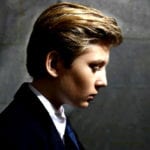 Weird Stuff
Weird Stuff  Weird Stuff
Weird Stuff  Mysteries
Mysteries 10 Tragic Disappearances and Deaths in Joshua Tree National Park
 History
History 10 Ways Childhood Really Sucked in the Old West
 Music
Music 10 Name Origins of Famous Bands from the 1990s
 Religion
Religion 10 Biggest Turnarounds by the Catholic Church
 Weird Stuff
Weird Stuff 10 Unbelievable Times Laws Had Unintended Consequences
 Humans
Humans Ten Historic Women Who Deserve Way More Credit Than They Got
 Movies and TV
Movies and TV 10 Films That Spawned Major Lawsuits
 History
History Ten Times Towns Were Wiped Off the Face of the Earth
 Creepy
Creepy 10 of the Most Disturbingly Haunted Public Houses in the UK
 Weird Stuff
Weird Stuff 10 Niche Subcultures That Are More Popular Than You Might Think
 Mysteries
Mysteries 10 Tragic Disappearances and Deaths in Joshua Tree National Park
 History
History 10 Ways Childhood Really Sucked in the Old West
Who's Behind Listverse?

Jamie Frater
Head Editor
Jamie founded Listverse due to an insatiable desire to share fascinating, obscure, and bizarre facts. He has been a guest speaker on numerous national radio and television stations and is a five time published author.
More About Us Music
Music 10 Name Origins of Famous Bands from the 1990s
 Religion
Religion 10 Biggest Turnarounds by the Catholic Church
 Weird Stuff
Weird Stuff 10 Unbelievable Times Laws Had Unintended Consequences
 Humans
Humans Ten Historic Women Who Deserve Way More Credit Than They Got
 Movies and TV
Movies and TV 10 Films That Spawned Major Lawsuits
 History
History Ten Times Towns Were Wiped Off the Face of the Earth
 Creepy
Creepy 10 of the Most Disturbingly Haunted Public Houses in the UK
Top 10 Rumored Locations Of Long Lost Treasure
Treasure. There is a world of imagination in just that one word. It conjures up a hint of possibility and a whole lot of excitement.
Treasure hunting is a popular activity around the world, especially in locations such as Oak Island, Nova Scotia which is rumored to be the place one might find the Ark of the Covenant and the Holy Grail, supposedly buried there by the Knights Templar. Numerous attempts have been made to locate these items, as well as pirate treasure and even Shakespearean manuscripts thought to also be hidden somewhere on the island. None of these attempts have yielded anything other than miscellaneous artifacts, but that hasn’t dampened the excitement of what might lie just around another corner.
On this list are some more long-lost treasures around the world and the places they could possibly be discovered in.
10 Legendary Treasures Still Waiting To Be Found
10 The Florentine Diamond
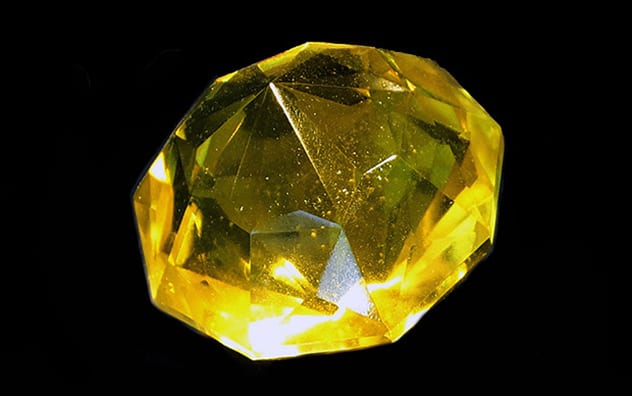
The stunning light-yellow Florentine Diamond was once part of the Crown Jewels of Austria and the pride of the Medici Family. Its worth in modern times has been estimated to be around $20 million, even though it was once sold for a mere 2 francs by a soldier who took it off the lifeless body of Charles the Bold in 1477.
The diamond has nine sharply-cut sides, originated in India and is said to have been cut by Flemish jeweller Lodewyk van Bercken. After the diamond was sold for glass by the aforementioned soldier, it passed through many hands before it ended up being displayed in Vienna as part of the Austrian Crown Jewels.
The stone was stolen in October 1918 along with Queen Elizabeth’s diamond crown, rings, necklaces and more valuable gems. The trail of the Florentine diamond ended in 1919 after a lawyer, Bruno Steiner, who was entrusted to keep the stone safe disappeared with it. When Steiner was eventually tracked down in 1923, he denied having the diamond saying that Charles I of Austria had sold it to regain the throne. He died in 1930 without the diamond ever having been found.
Rumors abounded that the diamond had been smuggled into South America, while yet more rumors had it that the gem had been re-cut or even cut into smaller diamonds and sold on the international diamond market. These days, there is no telling where the diamond could be, but the search is still on in the USA for a hopeful few who are chasing the dream of being the discoverer of this rare diamond.
9 Jesse James’ gold

Jesse James was not a nice guy. He and his brother Frank committed horrible acts against unarmed Union soldiers, and participated in the Centralia Massacre in 1864. When the Civil War ended the brothers became common criminals, robbing stagecoaches, trains and even banks across the Midwest. Jesse had a target on his back in the form of a reward for his capture and one of his own gang members eventually took him out with a bullet, hoping to cash in on the reward.
Despite all the awful things Jesse James did in life, he became somewhat of a heroic figure after his death with many ‘fans’ comparing him to Robin Hood. This was despite a complete lack of evidence that he ever shared his loot with the less fortunate.
It is believed that Jesse buried some of what he stole in the Keechi Hills located in the Wichita Mountains of Oklahoma. Locals and foreigners alike have for years tried to decipher symbols and other clues carved into the rocks in the area, supposedly by Jesse and Frank, hoping that it would lead them to gold. So far, no luck, but treasure hunters are not giving up hope just yet.
8 Sao Joao shipwreck
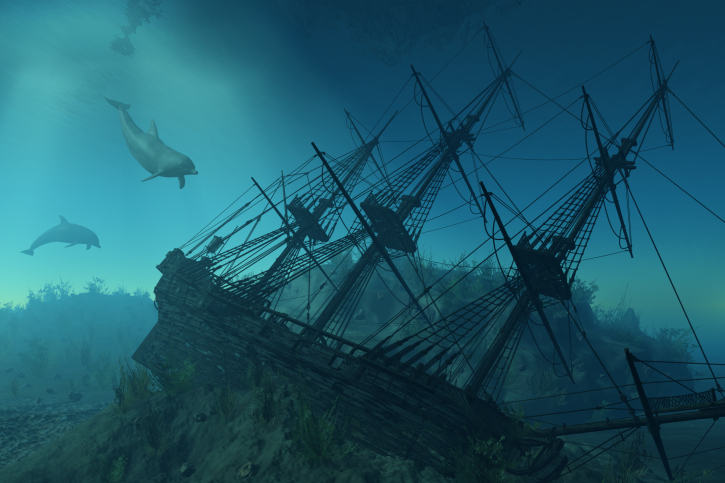
On 8 June 1552, the Portuguese ship São João was wrecked along the coastline of present-day Port St. Johns in what is today known as the Eastern Cape province of South Africa. The ship met its end near the mouth of the Umzimvubu River and 100 of the 600 people on board drowned. The remaining 500, led by Manual de Souza e Sepulveda remained where they washed up for a couple of days before starting a gruelling trek north, towards Mozambique. However, only 21 people, of which 14 were slaves, survived the journey to Delagoa Bay.
The ship was laden with the richest cargo at the time it went down, worth a million in gold. It was crammed full of pepper, precious stones, Chinese blue and white porcelain, carpets and more. Before starting the doomed journey to Mozambique, some of the slaves allegedly took some of the treasures from the ship. The money chests, however, went under with the wreck and treasure hunters are still looking for it. Some claimed to have found some porcelain and Carnelian beads along the shore, while one treasure hunter even claimed to have found a gold pendant.
The bulk of the treasure is seemingly still underwater, just out of reach of those who want to find it the most.
7 East River treasure

The HMS Hussar, a 28-gun British warship, was on its way to Rhode Island via the East River in November 1780. On board, according to several whisperings, was gold to the value of at least $4 million. The Hussar sank in the tidal strait between Astoria and Wards Island, also known as Hell Gate. Survivors of the incident later claimed that the ‘treasure’ had been delivered to its intended destination before the ship sank.
This did not deter the British government, who tried to find the wreck on three separate occasions without success. When they finally gave up, it was the turn of treasure hunters who braved the dark waters to try and uncover the gold. Nothing has come of anyone’s search other than pottery and other small artifacts and the wreck has yet to be discovered, with some experts believing that the remains of the ship has been incorporated as landfill in the Bronx. Some treasure seekers believe the gold may also be part of the landfill now.
6 Varyagin’s valuable cargo

Russia might not be the first location that comes to mind when the topic of treasure hunting arises, but there are some valuable lost items in this country that treasure hunters wouldn’t mind discovering. This includes the Library of Ivan The Terrible, Napoleon’s gold which is believed to have been sunk in a lake in the western part of the Smolensk Region and Kolchak’s Gold which today would be worth over $280 million.
On October 7, 1906 cargo liner Varyagin sank off the coast of Ussuri Bay in what is known today as the Primorye Territory. It wasn’t a ‘big deal’ at the time, but the owner of the ship, Aleksei Semyonovich Varyagin drew a lot of attention to himself and the incident when he asked the authorities to compensate him for a ‘valuable cargo’ that had been lost. The amount he requested was 60,000 rubles. The governor at the time, refused and it was only in 1913 that the former captain of the Varyagin tried to launch an expedition to the site of the sinking. His efforts were unsuccessful and subsequent efforts to find the ‘valuable cargo’ were hindered first by the start of the First World War and then the 1917 Revolution.
However, those who are brave at heart are not discouraged from seeking out the treasure for themselves. The prize might just turn out to be a windfall amounting to several million rubles.
5 The many lost treasures of Hawaii

Hawaii is a spectacular holiday destination, with the added bonus of a horde of buried treasure sites. According to several legends, that is. One of the most exciting rumors have it that the burial chamber of King Kamehameha, who died in 1819, contains warrior robes made from the feathers of now-extinct birds, and heaps of valuable gems. Treasure hunters have yet to find this burial chamber with some believing it might be hidden away in a rainforest cave.
During the battle of Kepaniwai in 1790, King Kamehameha’s army murdered most of the Maui warriors and dumped their bodies at Iwao Stream, not far from Wailuku. Treasure enthusiasts believe that relics from this battle can still be found hidden in the area.
In addition to this, many believe that over $5 million’s worth of gold and silver was buried near Palemano Point by English pirate Captain Cavendish, and that Captain James Cook’s treasures and weapons were buried on Kauai after he was killed by natives in 1778.
4 Nadir Shah’s loot

The allure of finding treasure hasn’t escaped exotic India.
In 1739, Persian invader Nadir Shah invaded Delhi with an army of 50,000 men. After massacring at least 30,000 people, his army looted the place and ended up with a treasure caravan of 150 miles long. It is here that the story gets a bit murky. Some versions have it that Nadir was murdered on his way back to Persia that same year, while others say he was murdered in 1747. Either way, the person who killed him is alleged to be Ahmad Shah who made off with the bulk of Nadir’s stolen treasures. Before Ahmad’s death he apparently buried these treasures in the tunnels of the Hindu Kush Mountains.
The Koh-I-Noor diamond was among the loot and has been added to the British Crown Jewels. The rest of it remains up for grabs, so to speak.
3 The Kruger Millions

During the South African War, things started to look really bad for the Boers in South Africa. The president at the time, Paul Kruger, was forced into exile in Europe after South Africa’s annexation to the British Empire, to avoid capture. Leaving Pretoria on 29 May 1900, he travelled by train to Machadodorp on 4 June after which he crossed the border to Mozambique and got on a ship to Europe. He died during exile in Geneva, Switzerland.
What was discovered after he left, is that Kruger allegedly hid away a cache of gold bars and coins to the value of $500 million in the Blue River area in what is today known as the Mpumalanga province. This rumor started in 1900 when British governor, Lord Alfred Milner, revealed that gold had been taken from the South African Mint and National Bank. While Kruger was still in Machadodorp, a train was reportedly loaded to the brim with these bars and coins and sent on its way to Mozambique. However, it never arrived there and between Machadodorp and the Mozambiquan border, the gold seemingly vanished into thin air.
Local treasure hunters believe that the gold had been stashed away on a farm between Sabie and Waterval Boven. Hundreds of searches have been carried out in and around the area, but the treasure has yet to be discovered.
Update: In February 2021 several news articles stated that some of the Kruger Millions have been discovered after Kruger ponds were found in a Swiss vault. They have since been acquired by the South African Mint.
2 The Jacobite Gold of Loch Arkaig
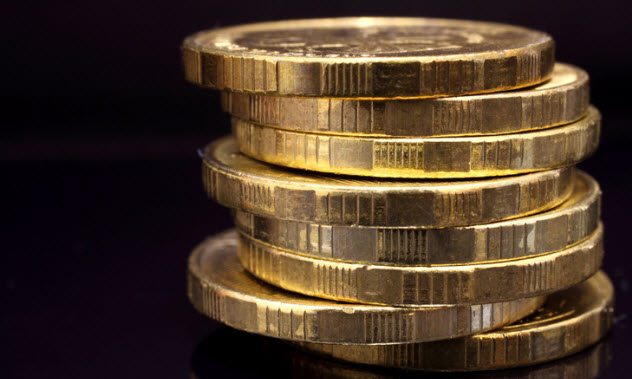
In Lochaber, Scotland lies the beautiful Loch Arkaig. Unlike at Loch Ness, those who travel here don’t keep a look out for a fabled sea serpent. Instead, some try their hand at finding the lost Jacobite gold believed to still be hidden in the area.
The Jacobite gold was a large amount of gold coins sent along by Spain to finance the Jacobite rising in Scotland in 1745. Spain pledged to send at least 400,000 livres each month to sustain the rebel army and the first lot was dispatched in 1745. It had hardly landed on the west coast of Scotland however when it was captured by Clan Mackay. In April the following year a shipment of 1,200,000 livres was unloaded at Loch nan Uamh, Arisaig. In total, seven caskets of Spanish gold made it to Scotland, but by the time the last casket was offloaded, the Jacobite fight was over and their army scattered.
Six of the seven caskets were brought to Loch Arkaig and buried. MacPherson of Cluny was in control of the money and is believed to have used some of it to fund ultimately failed attempts at another uprising. All of the gold has not been accounted for however. There were multiple claims and accusations recorded between the Highland chiefs and exiled Jacobites regarding the treasure, but the fate of the rest of the gold has not been established.
1 Stolen European treasures
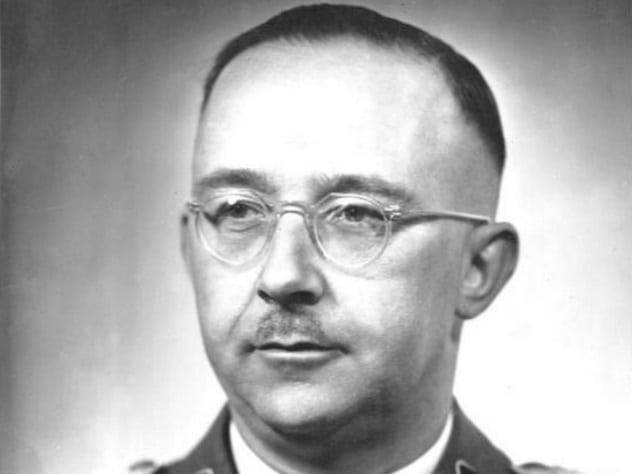
Almost 76 years ago a S.S. officer using the pseudonym ‘Michaelis’ wrote constantly in a journal. His writings outlined Nazi commander Heinrich Himmler’s plans to hide stolen European ‘treasures.’ The diary was kept away from the public and was in the possession of a Masonic lodge for decades after the war.
In 2019 the lodge gifted the diary to a Polish foundation named Silesian Bridge. The foundation in turn, confirmed that same year that they had received the journal as ‘an apology for WWII.’ At the time, it was yet to be determined whether the journal was authentic, but a map included with it caused great excitement. The map indicated the location of a well on the Hochberg Palace grounds where the Nazis purportedly hid their stolen treasures. These include around 63,000 artworks and cultural artifacts stolen from Polish Jews.
The diary further listed another 10 sites where it is believed the Nazis buried gold, gems, paintings and religious artifacts. The gold at the bottom of the abovementioned well alone is purported to be worth more than $1 billion.
10 Lost Treasures And The Awesome Ways We’re Getting Them Back

